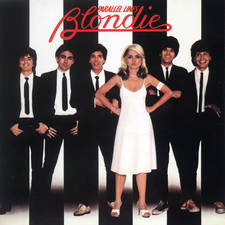Concert For Bangladesh: How George Harrison formed the first ever all-star benefit rock concert
22 September 2023, 13:34
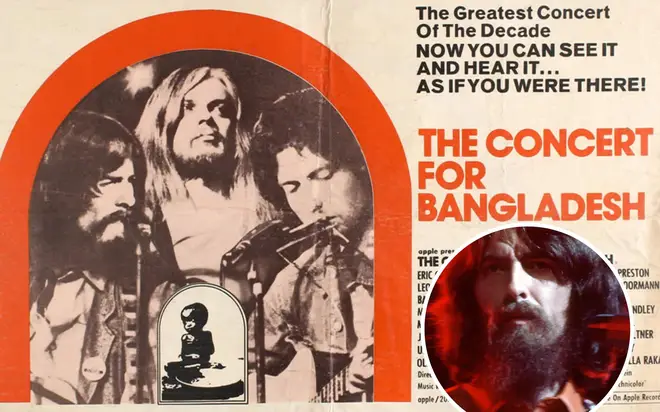
Listen to this article
The Concert For Bangladesh was arguably the first ever benefit rock concert.
A star-studded relief concert that transformed how people perceived musicians at the time, no longer were rock stars simply countercultural outsiders indulging in life's many excesses.
After George Harrison put together the historic concert, wider society realised that musicians weren't mere celebrities but also had the power to make genuine change.
The event brought together icons of the era that nobody had ever witnessed before, and also brought two former members of The Beatles together on stage for the first time in five years.
- George Harrison's son Dhani thinks John Lennon liked 'All Things Must Pass' really
- When Frank Sinatra paid tribute to The Beatles with a gorgeous cover of 'Something'
- Cat Stevens pays tribute to George Harrison with comforting cover of ‘Here Comes The Sun’ at Glastonbury
- Harrisongs! George Harrison's 22 Beatles songs, ranked
Bangladesh, a foreign country only known in the West by intrepid travellers, swiftly became a household name with humanitarian efforts growing by the day.
So what inspired George Harrison to arrange the Concert For Bangladesh? What impact did it have? Who performed? Here's all you need to know:
What inspired George Harrison to organise Concert For Bangladesh?
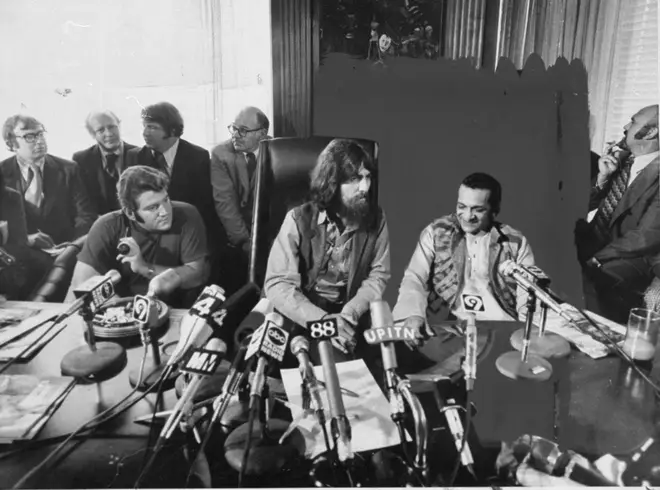
Throughout his time with The Beatles, George Harrison established a deep bond and life-long friendship with Ravi Shankar.
The pair found equals in each other both creatively and spiritually, with Bengali musician Shankar supporting Harrison in his new-found and much-publicised mystic journey.
In 1971 during the Bangladesh Liberation War, political and military turmoil meant that nearly 7 million people were displaced, creating an overwhelming refugee crisis.
On top of the war - and the associated atrocities that come with such situations - the region was hit by the Bhola cyclone and floods further devastated the area, with half a million people reported to have died during the crisis, and fears of a cholera outbreak amongst refugees fleeing to Calcutta.
After Shankar found out about the horrors facing his homeland, he described the situation to George over dinner according to collaborator Klaus Voorman, and he was horrified.
"I was in a very sad mood, having read all this news," Shankar later recalled, "and I said, 'George, this is the situation, I know it doesn't concern you, I know you can't possibly identify'."
"But while I talked to George he was very deeply moved ... and he said, 'Yes, I think I'll be able to do something'."
How did George Harrison pull it together?
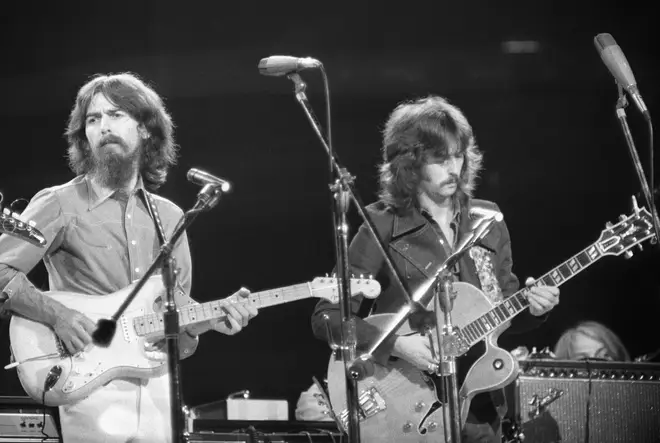
It was Ravi Shankar's idea to arrange a benefit concert, having originally hoped to raise $25,000 for aid from his own show which he wanted Peter Sellers to compare.
But George had a lot more leverage in the music industry, and his commitment to the cause meant it grew into an all-star concert with his many friends and collaborators.
In earnest, they only had five to six weeks of genuine preparation for the concert, so worked frantically to pull as many favours as possible.
George recorded the single 'Bangla Desh', which was co-produced by Phil Spector, to raise awareness for the plight of the region and help raise more funds.
After discussing who they could secure to perform, George and then-wife Pattie Boyd called everyone they knew, predominantly hoping to persuade Bob Dylan to join their efforts.
Dylan had only performed once in the past five years - at the Isle Of Wight Festival in 1969 - and his addition would've been some coup, even for one of The Beatles.
Slowly he managed to get a list of artists together ranging from traditional Bengali musicians to rock stars the West was more familiar with.
After publicising the concert in a modest advert in the New York Times, tickets sold out almost immediately with a second concert having to be added.
Where and when did the Concert For Bangladesh take place?

The Concert For Bangladesh took place on 1st August 1971 at New York City's famed Madison Square Garden.
There were two concerts scheduled, one in the afternoon and one later than evening the same day.
A local Indian astrologer had suggested that early August was the best time to stage such an event, and it transpired that the only day that Madison Square Garden was available on such short notice was the first Sunday of the month.
All proceeds from the concert - along with the profits from Harrison's 'Bangla Desh' single and Shankar's own benefit record, Joi Bangla - would go to the newly established 'George Harrison–Ravi Shankar Special Emergency Relief Fund' which was distributed by UNICEF.
Who performed at the Concert For Bangladesh?

George Harrison While My Guitar Gently Weeps The Concert for Bangladesh 52adler The Beatles
Billed as 'George Harrison & Friends', Harrison managed to curate one of the most spectacular, star-studded lineups in popular music for the Concert For Bangladesh.
Alongside convincing fellow former Beatle Ringo Starr to perform alongside him, for the first time since 1966, he also secured none other than Bob Dylan to perform.
Though it wasn't guarantee he'd show up, until the music icon appeared half-way during the first concert on the afternoon of 1st August 1971, much to the relief of everyone organising the show as it would mark his first US performance in five years.
Other huge stars that contributed to the occasion were George's friend Eric Clapton - despite being in the throes of heroin addiction - Beatles collaborator Billy Preston, Leon Russell, the band Badfinger, Klaus Voorman and more who made up the concert's supergroup.
Safe to say it was a true one-off spectacle across the two concerts, with Harrison later recalling that Dylan said to him later that same evening: "'God! If only we'd done three shows!'"
The supergroup performed a melee of era-defining hits from all band members involved, predominantly songs by George Harrison, The Beatles, Bob Dylan, Ravi Shankar and even The Rolling Stones.
After Ringo agreed to partake, George tried to convince both John Lennon and Paul McCartney to get involved too, which would've seen all of The Beatles back together again.
John originally signed on, but after a disagreement with Yoko Ono pulled out, and Paul cited the legal issues amongst band members as his reason for not joining the concert.
What legacy did Concert For Bangladesh create?
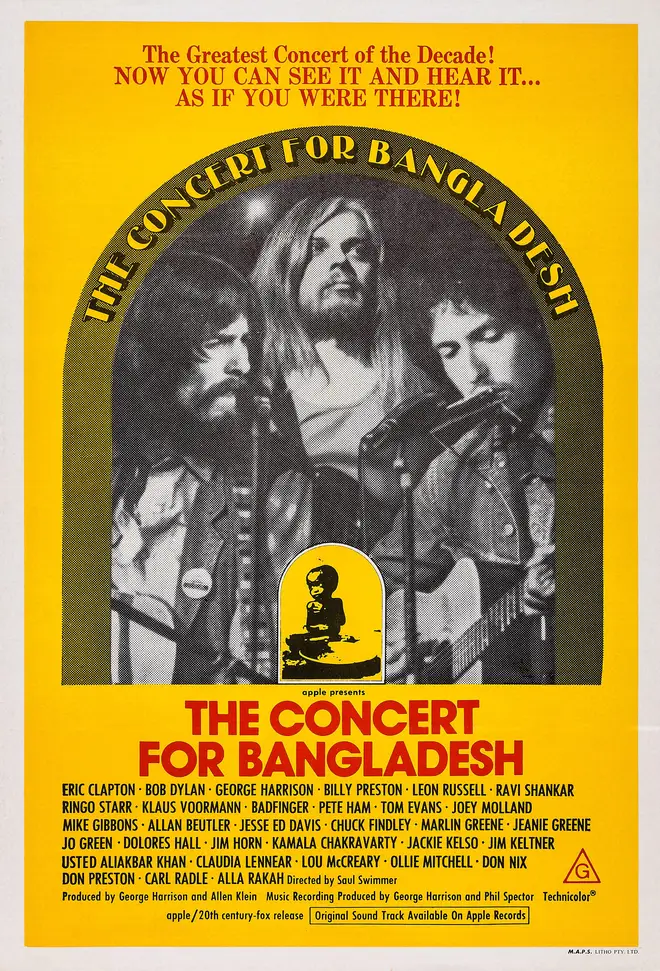
- When Bob Dylan was furious about The Beatles ripping him off: "I invented it!"
- Bob Dylan failed to impress Tom Jones until one iconic song won him over
- When John Lennon and Paul McCartney reconciled and nearly reformed The Beatles
- The Beatles' 20 greatest songs ever, ranked
The Concert For Bangladesh became the first ever all-star benefit rock concert, and raised an initial US$243,418.50 for UNICEF across the two concerts.
A further live album was recorded as well as a concert film, but due to legal issues and bureaucracy, much of the overall $10 million raised was held by the IRS for a decade before being released to the relief effort.
Already the concert had made an indelible cultural impact, proving that musicians could enact meaningful change instead of just writing about it.
The concept for Concert For Bangladesh in fact inspired Bob Geldof to create Live Aid for the Ethiopian famine relief in 1985, which he acknowledged during the global concert's promotional campaign.
After the disillusion with post-Woodstock events during the countercultural revolution, many believed that George Harrison's good faith in a great cause put "rock music back on course" and the ripples from his idea to blend of music, goodwill, and optimism can still be felt today.
